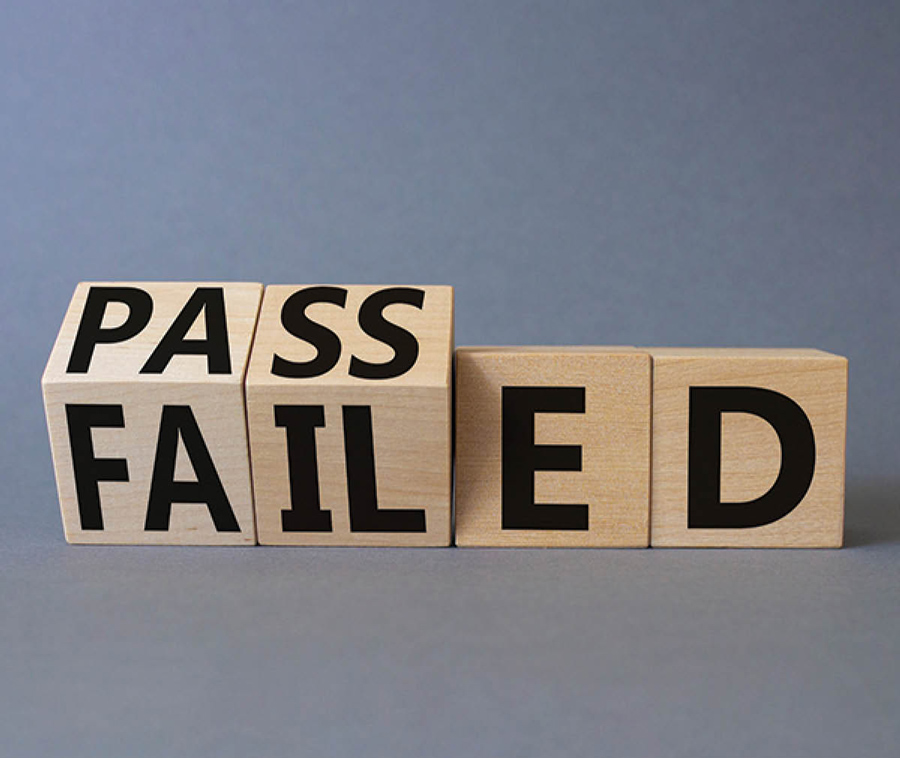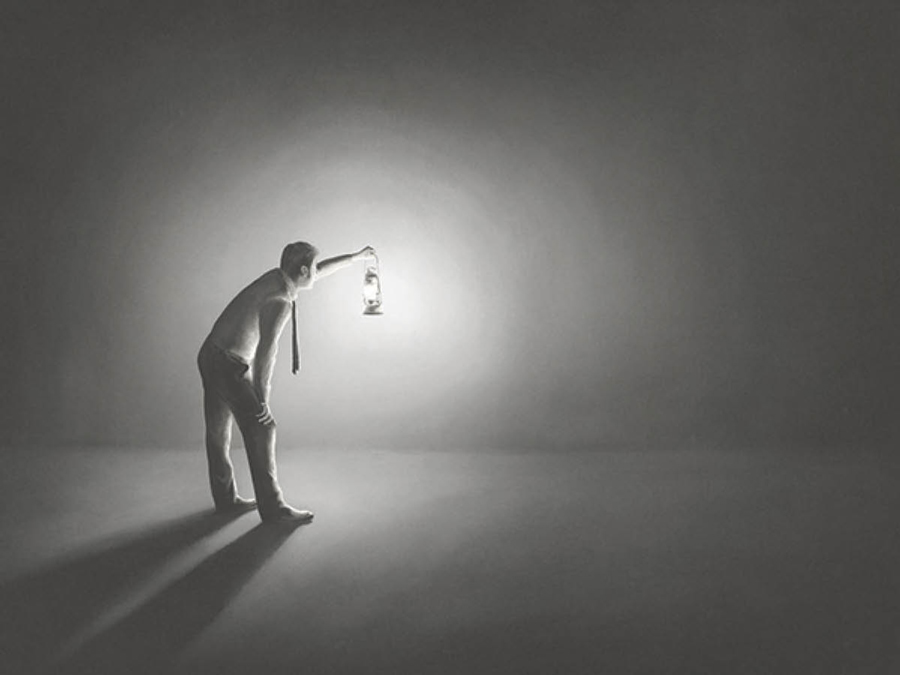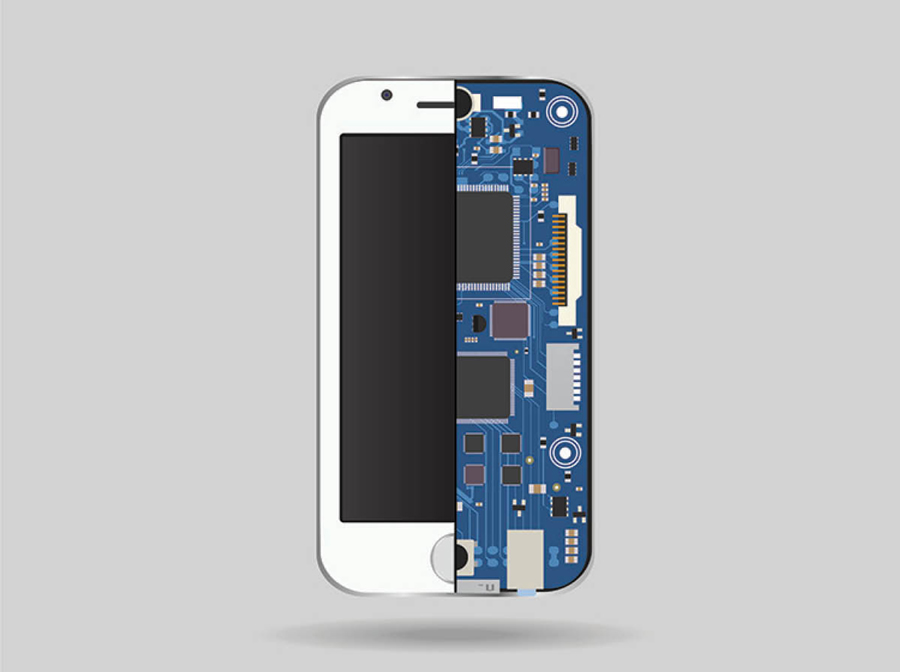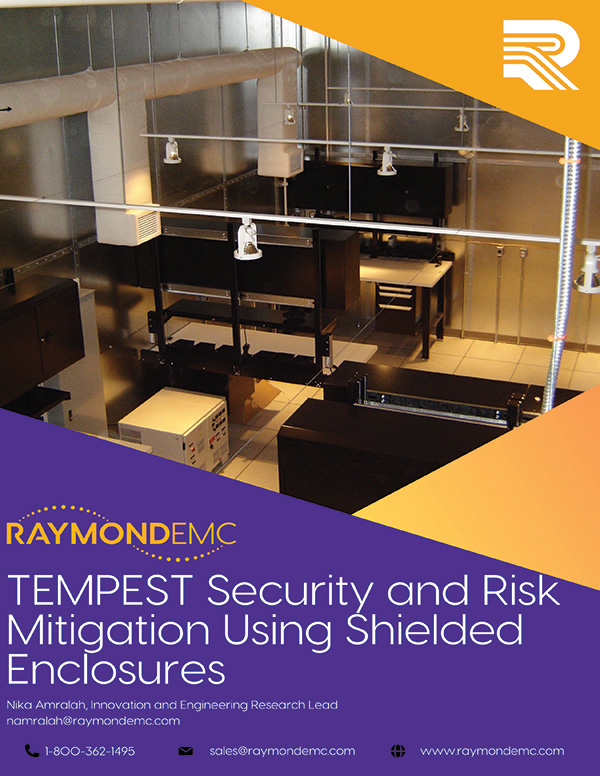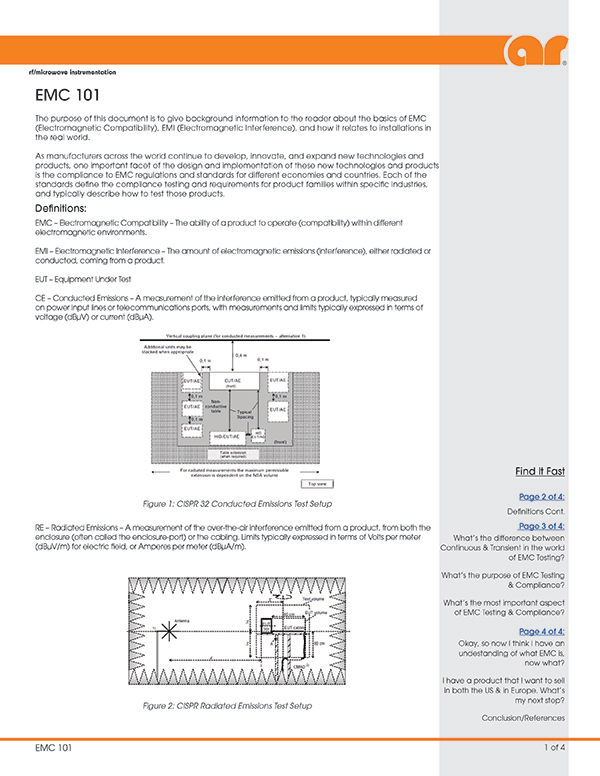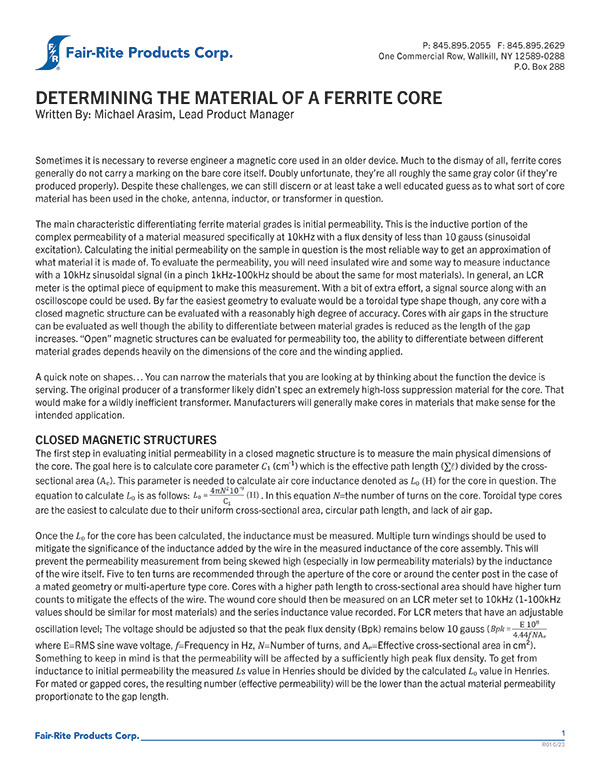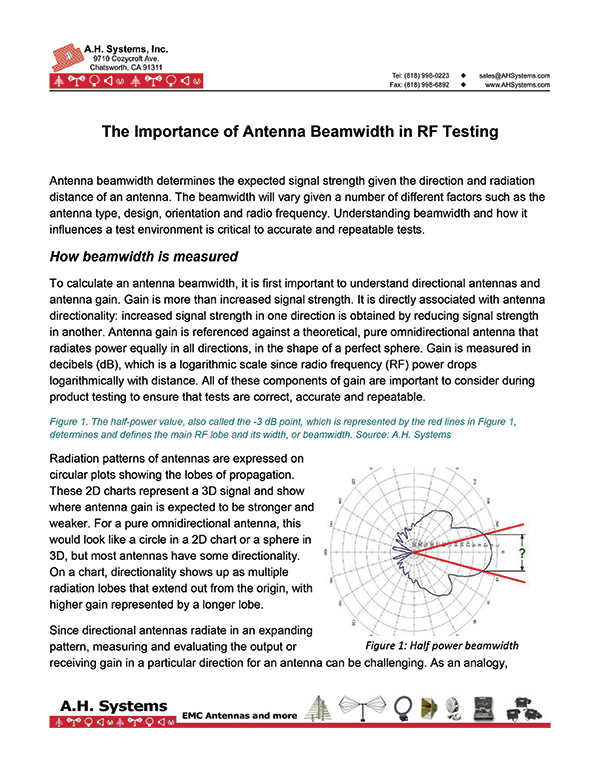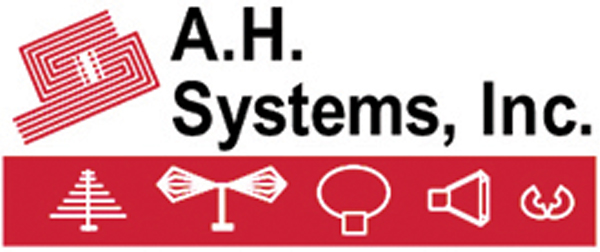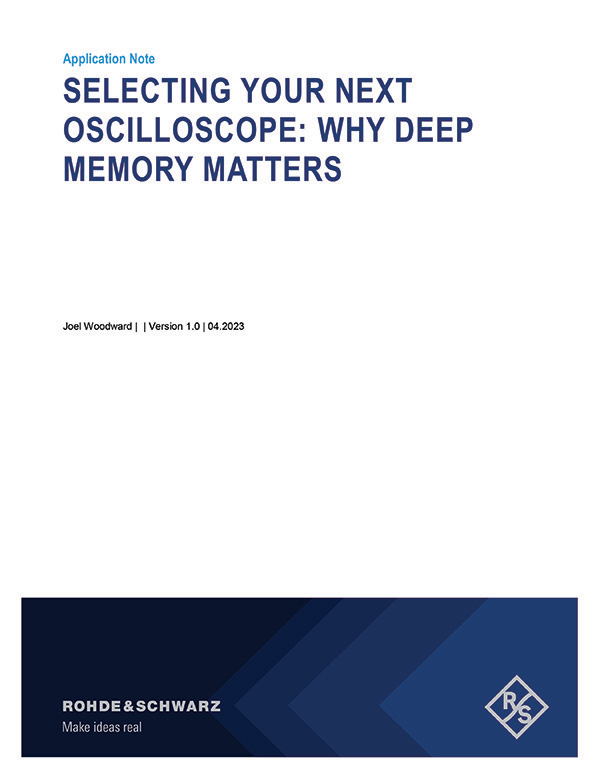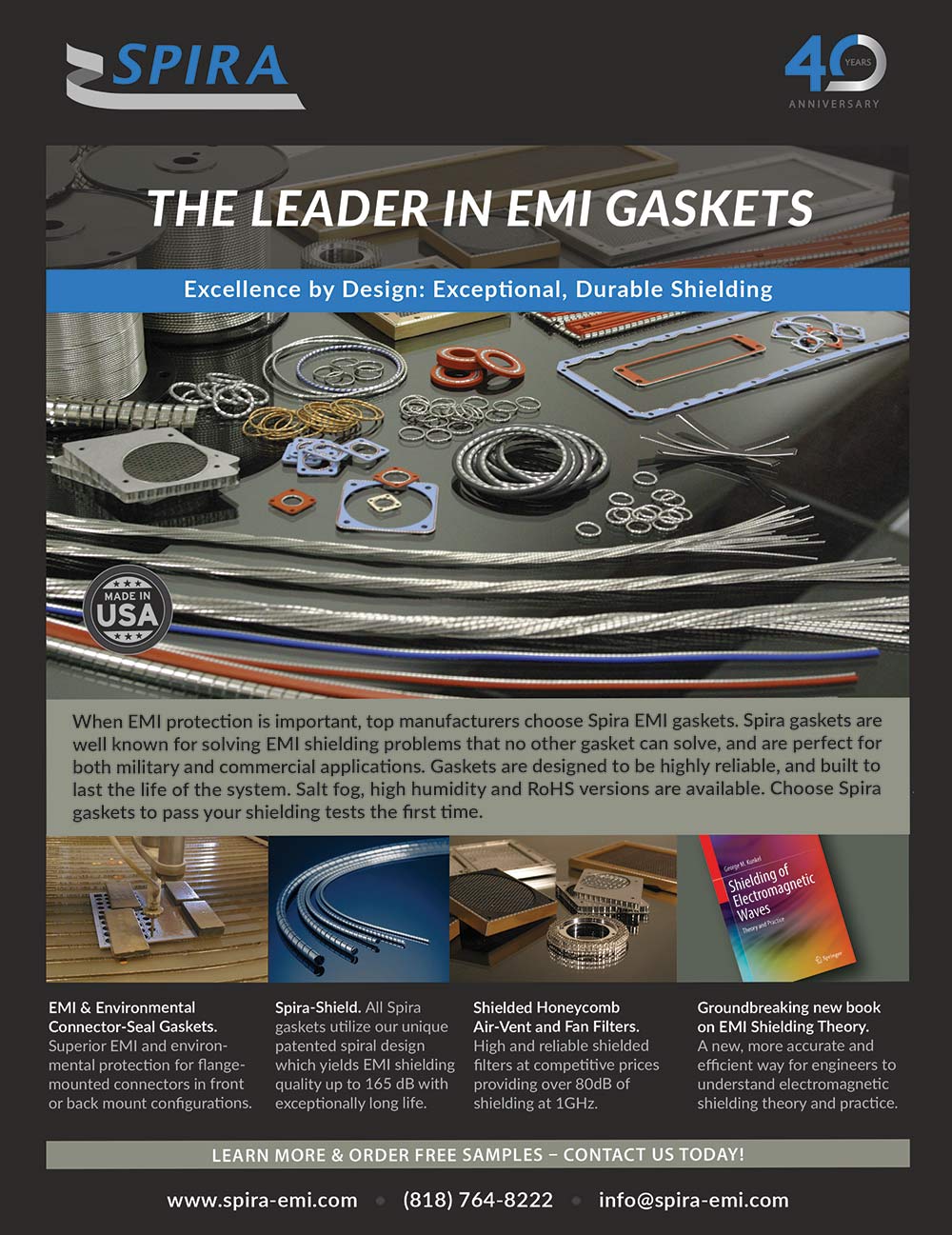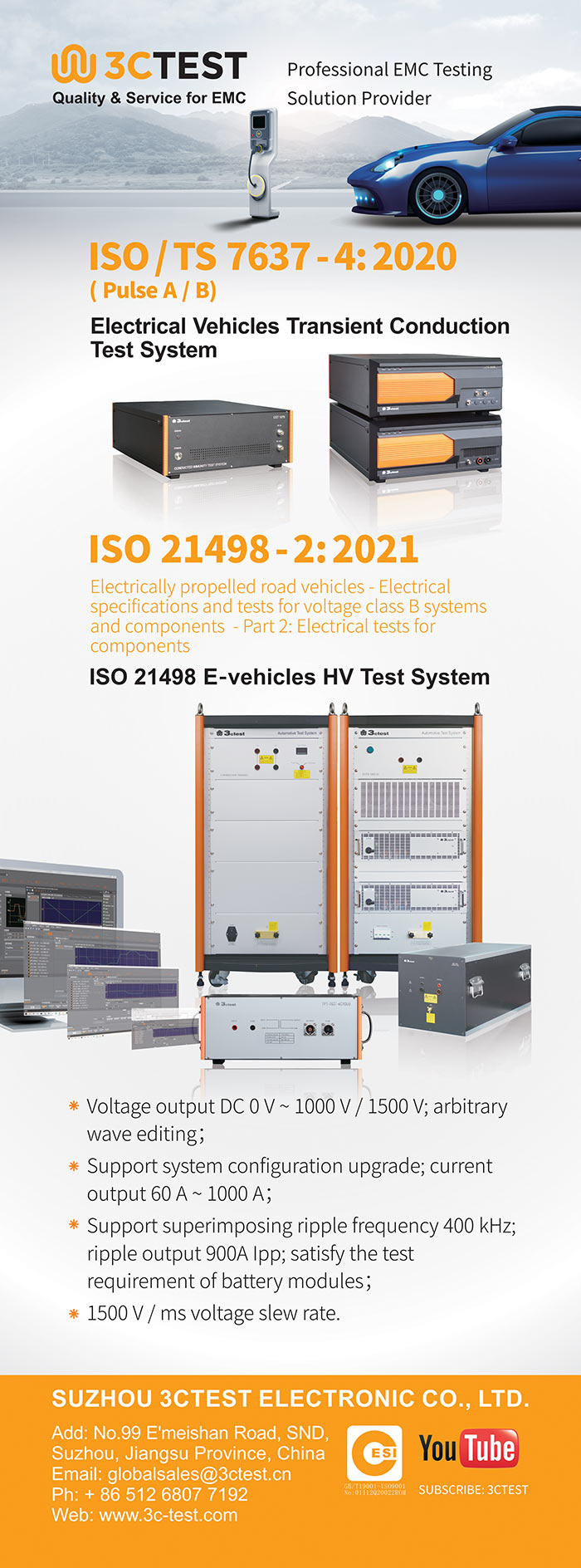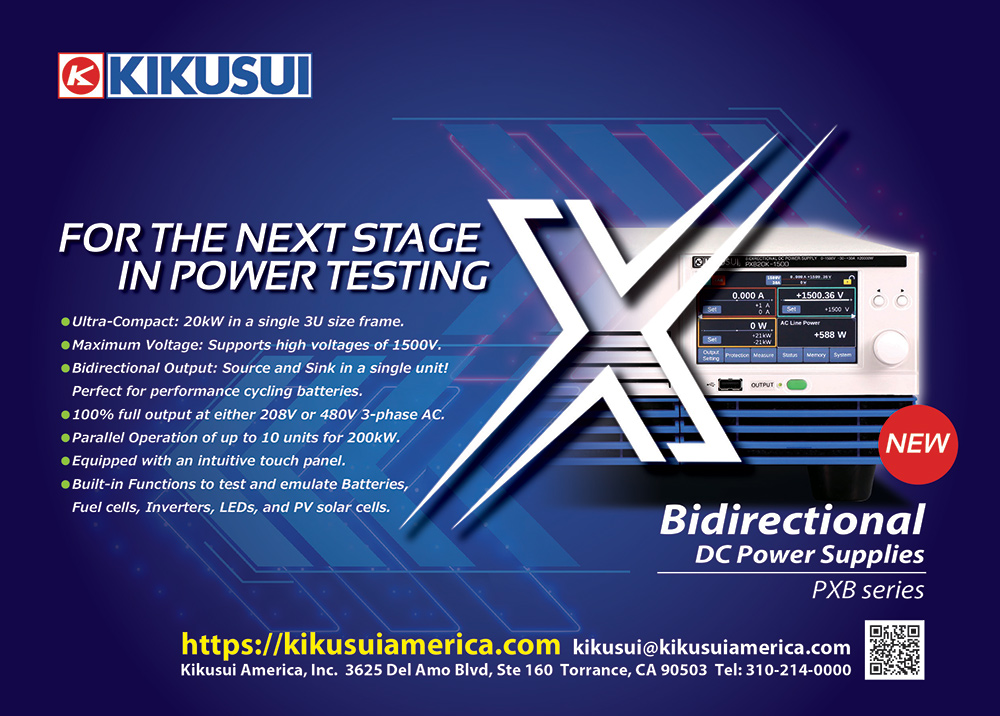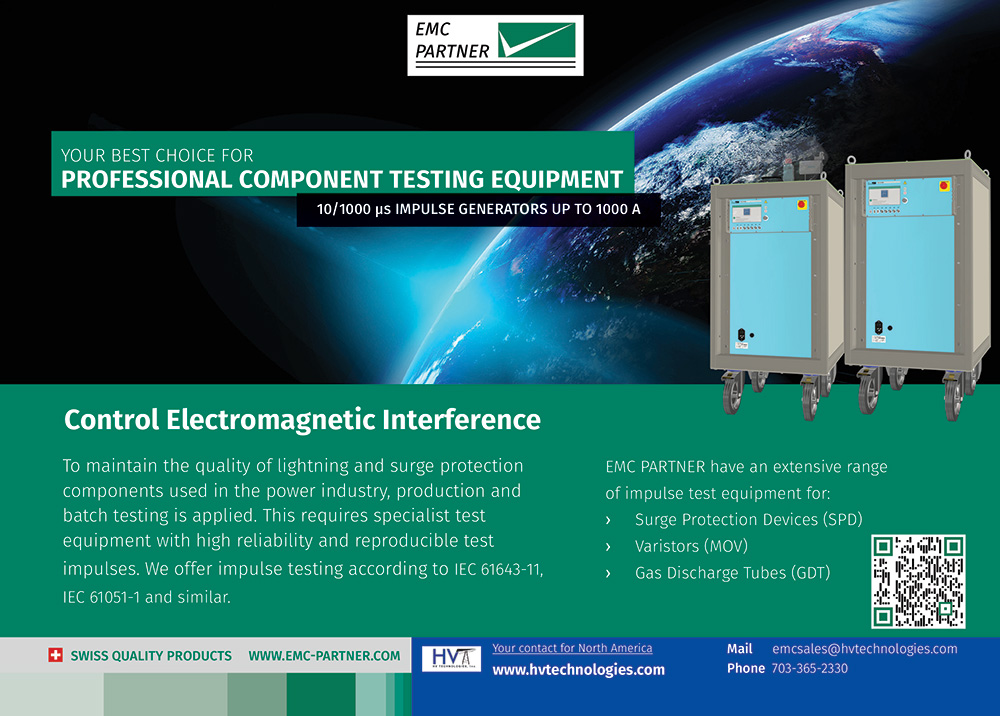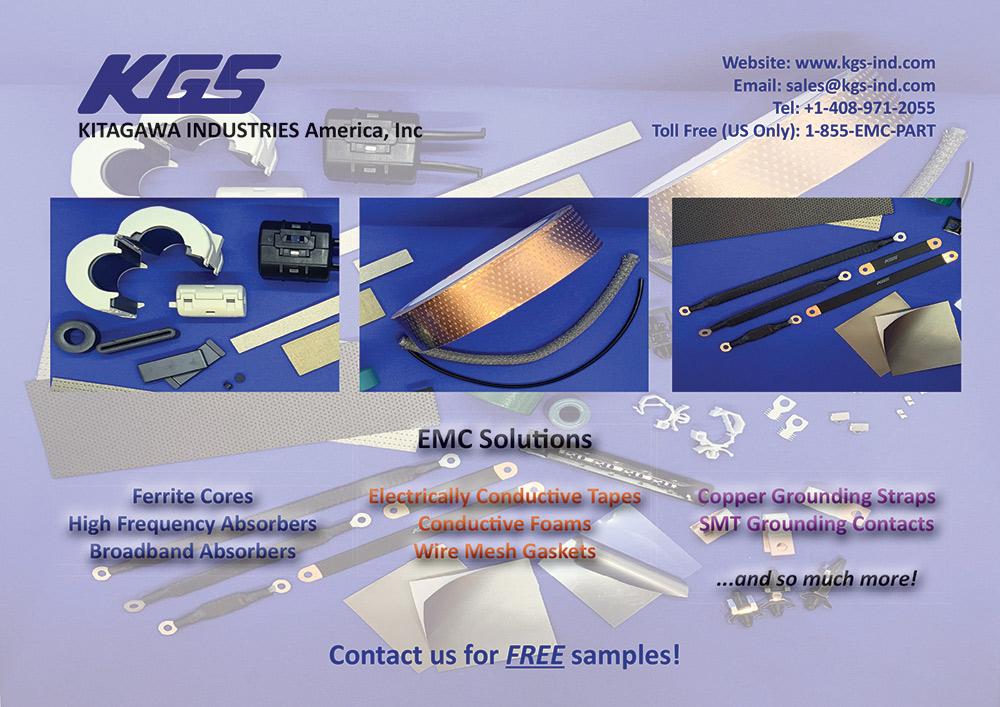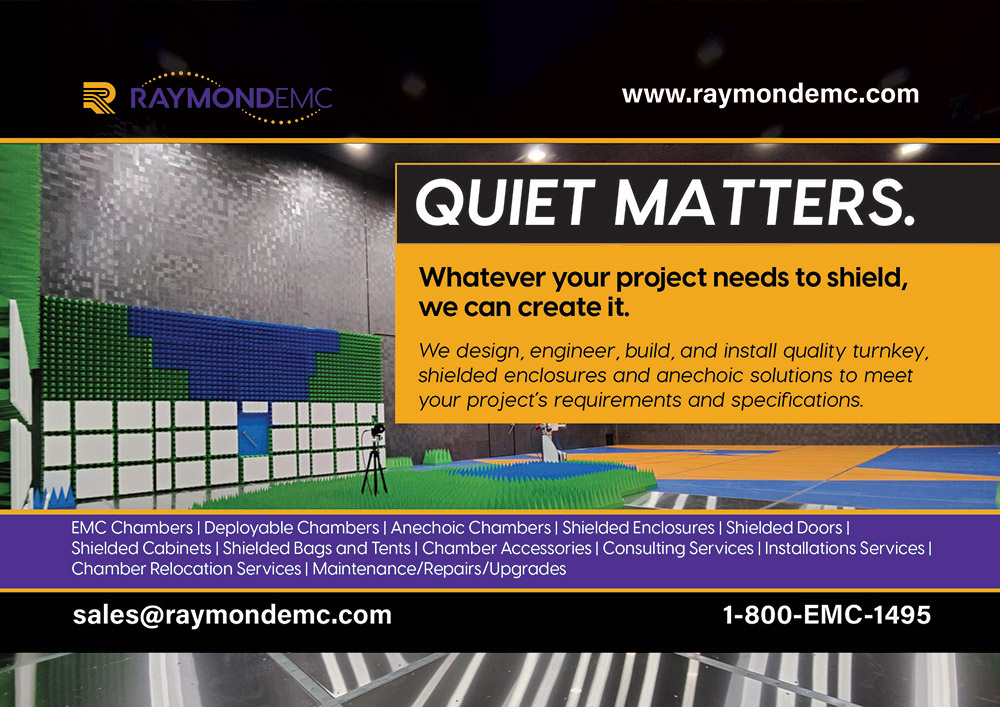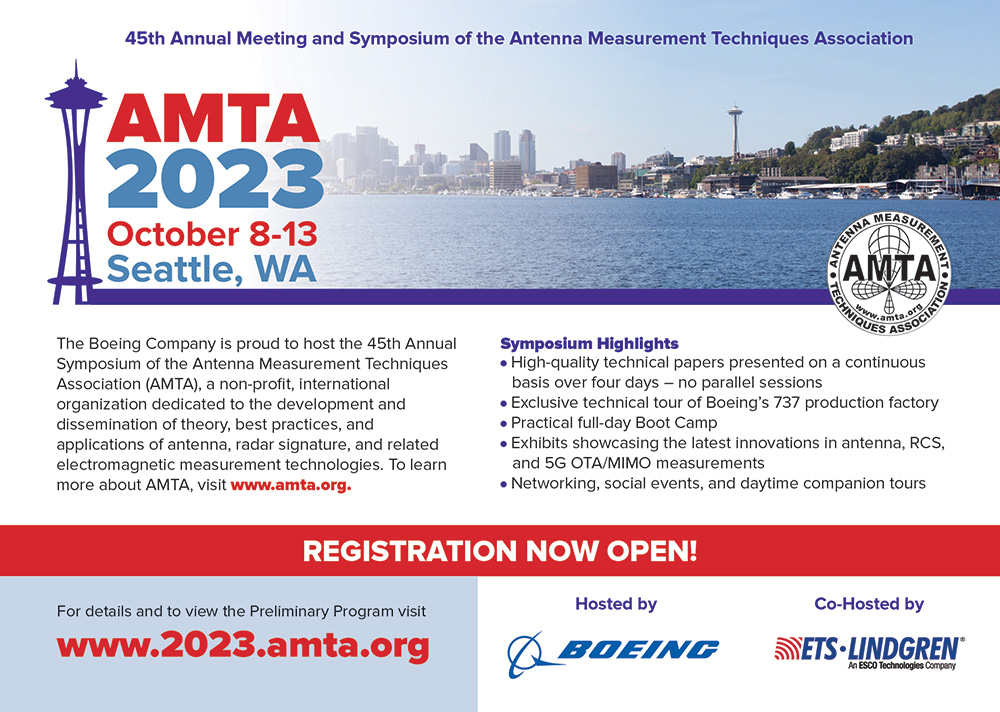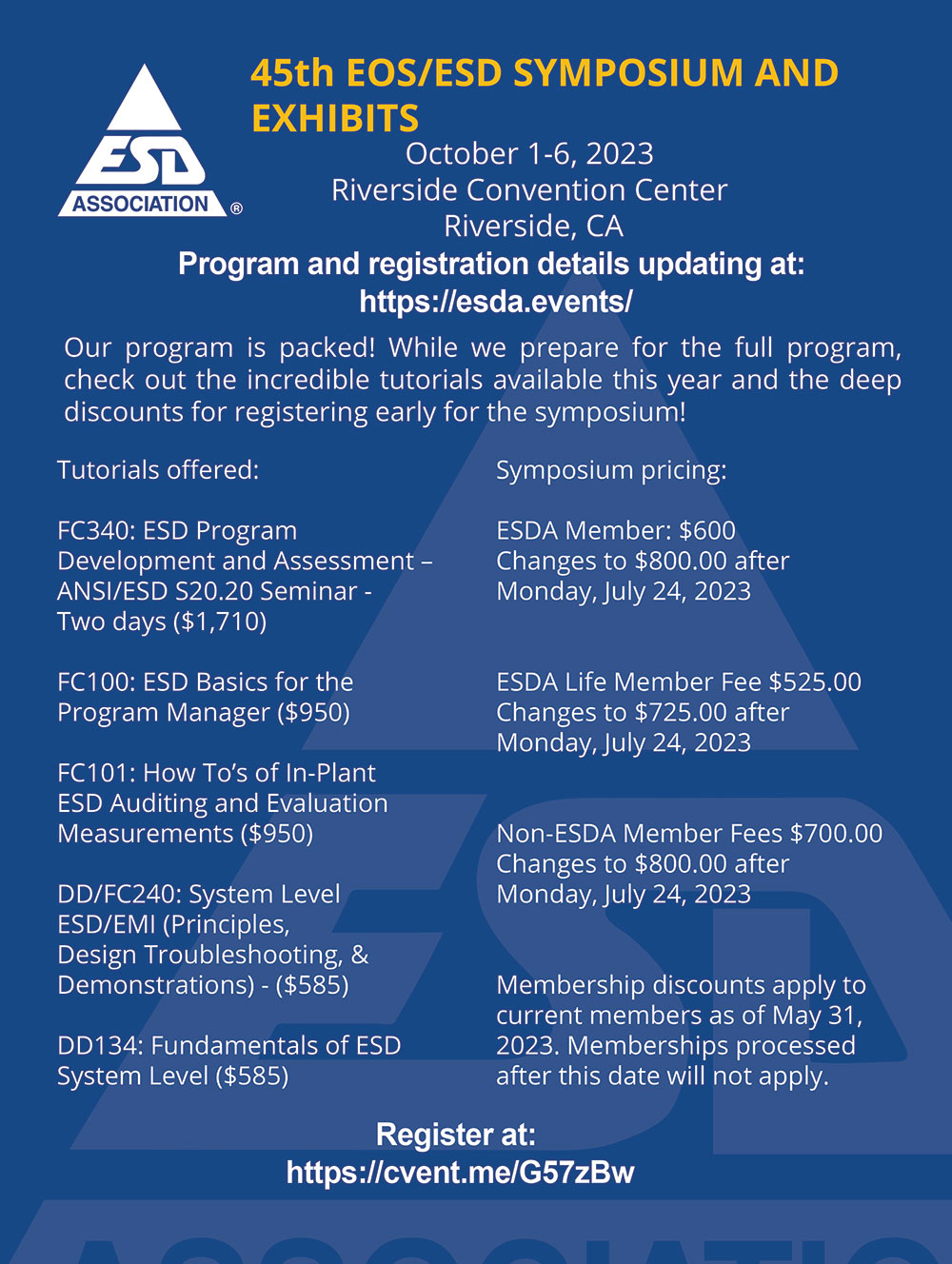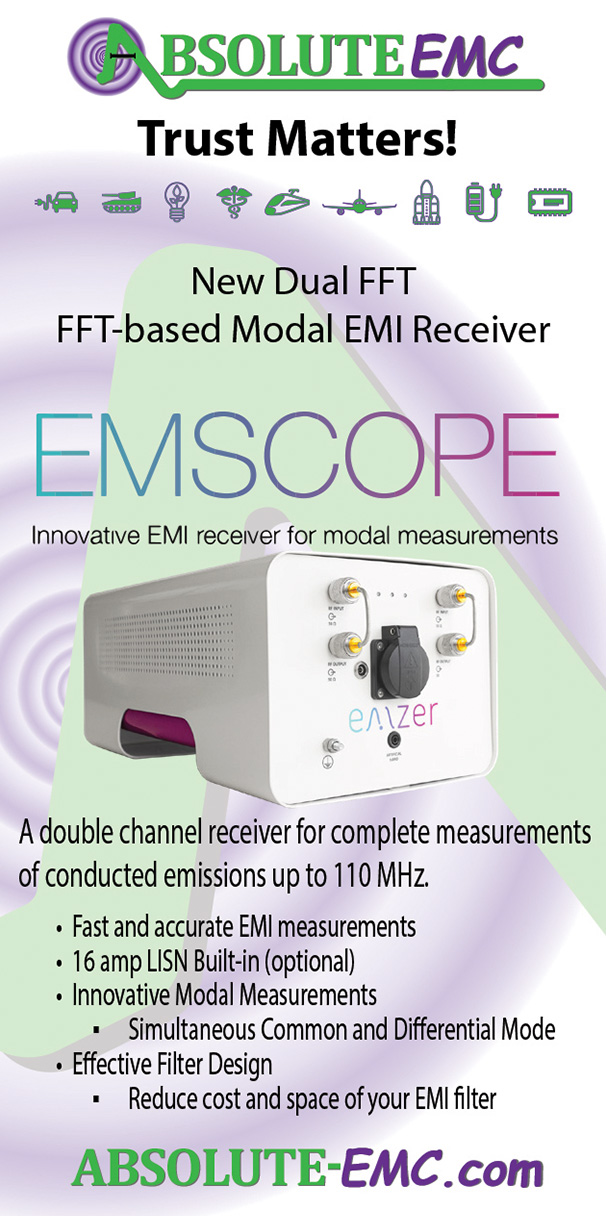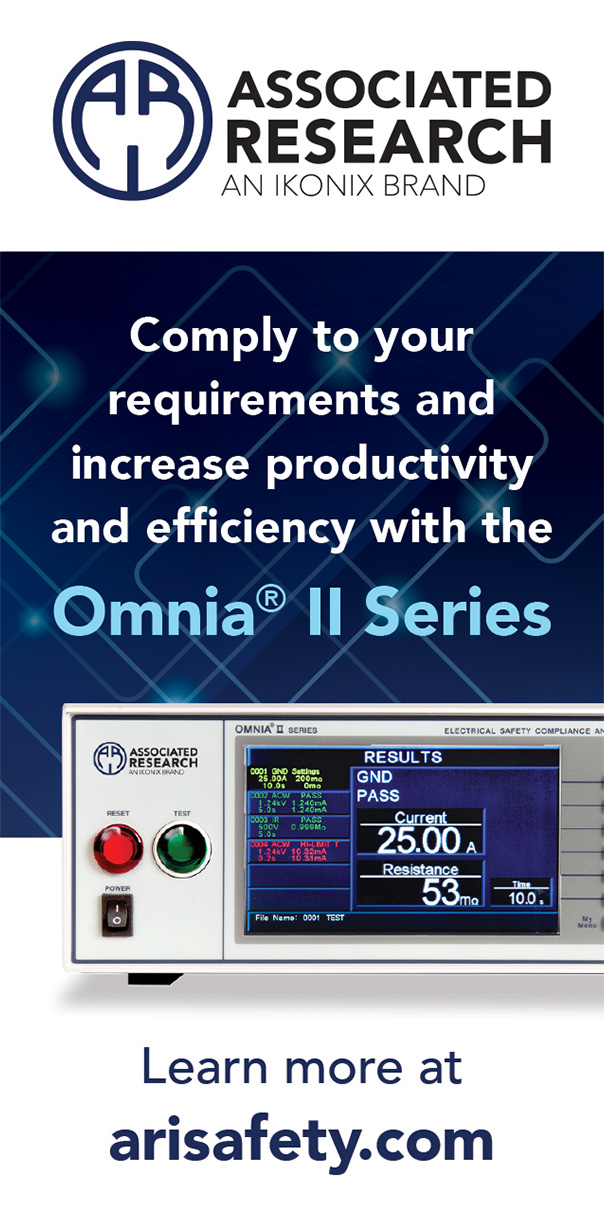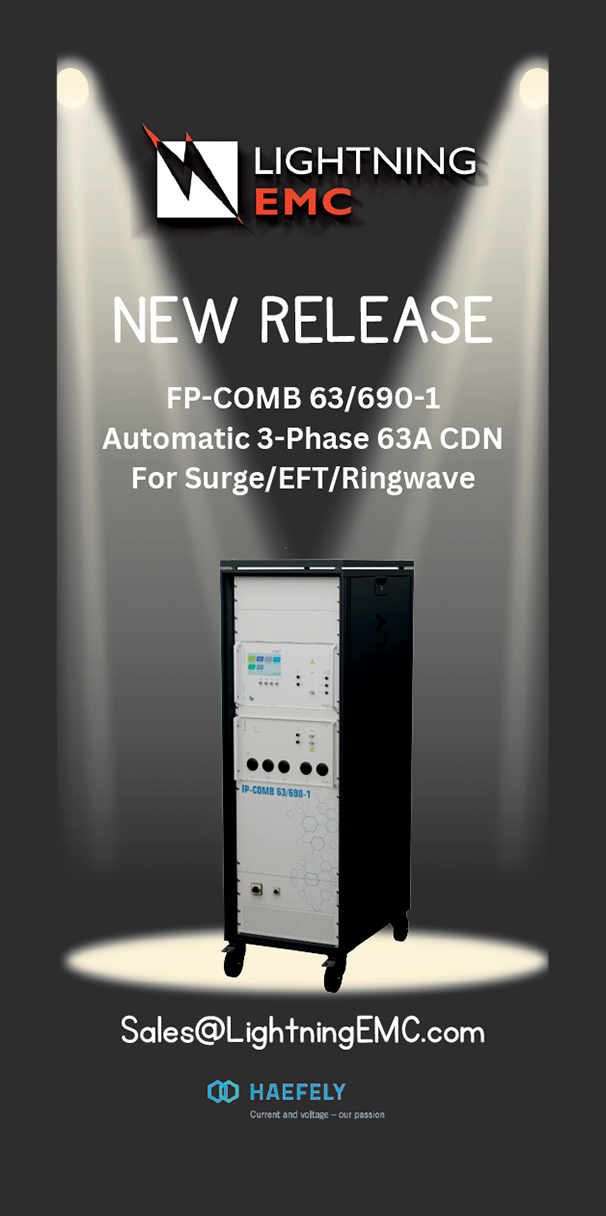
EMI Testing
Clock Duty Cycle Tuning for Desense Mitigation in Modulation‑Involved Cases
The Legal Perils of Customer Service
Clock Duty Cycle Tuning for Desense Mitigation in Modulation‑Involved Cases
The Legal Perils of Customer Service
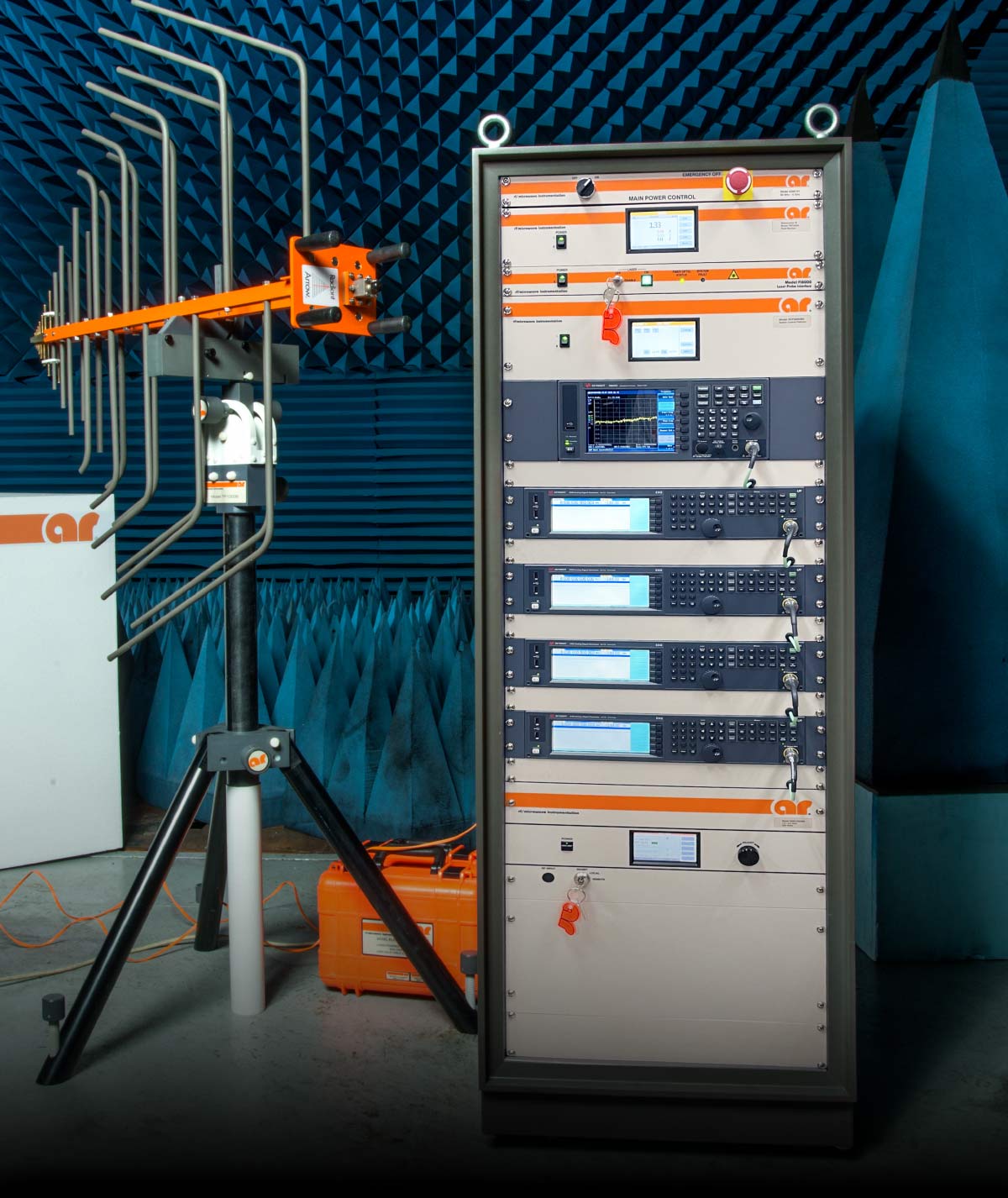
Testing Time by More Than 50%
For example, AR’s Multi-Tone System can reduce the typical time to run traditional tests such as IEC 61000-4-3, ISO 11451, and ISO 11452, by over 50%. In the event of an EUT failure, margin investigation and traditional single tone testing is easily performed through AR’s emcware® software.
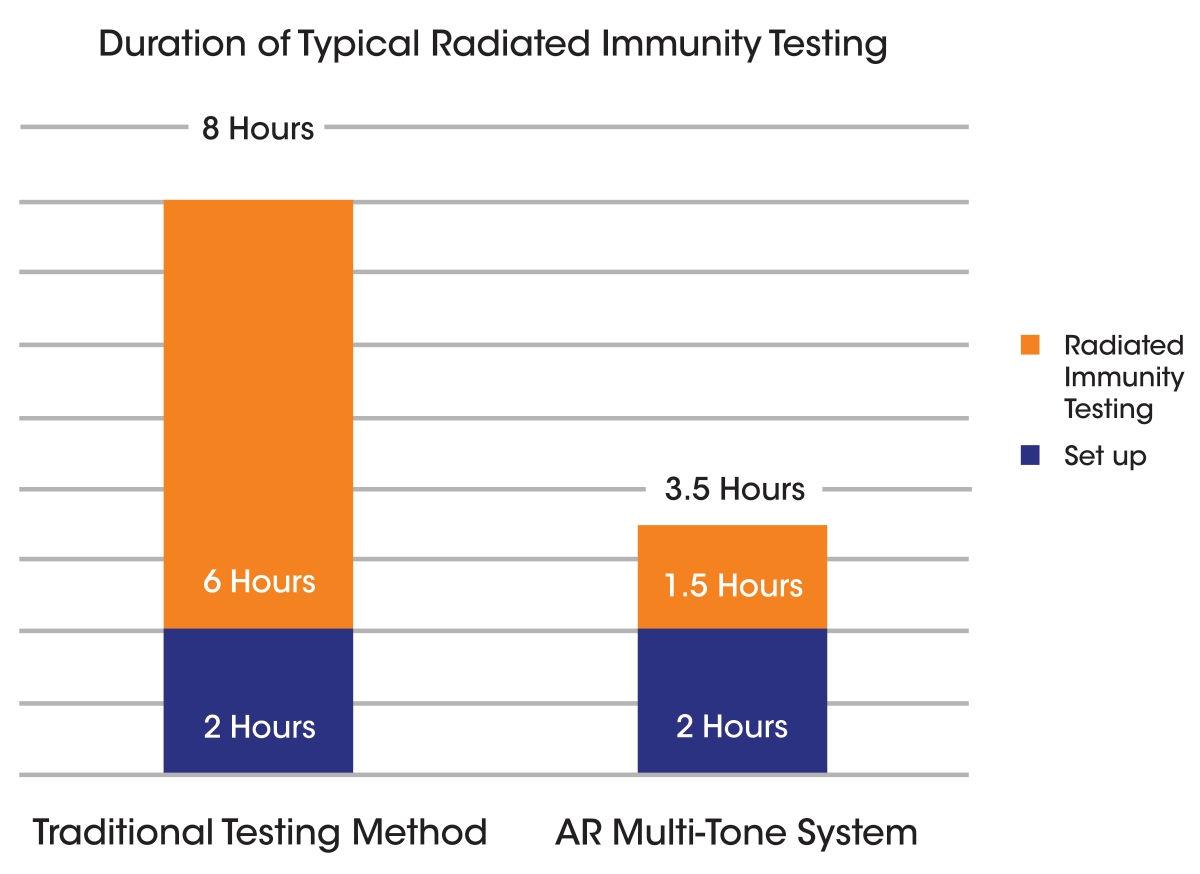
This is a creative way to help your company be more profitable by using your assets more efficiently.

ISSN 1948-8254 (print)
ISSN 1948-8262 (online)
is published by
Same Page Publishing Inc.
451 King Street, #458
Littleton, MA 01460
tel: (978) 486-4684
fax: (978) 486-4691
©Copyright 2023 Same Page Publishing, Inc. all rights reserved
Contents may not be reproduced in any form without the prior consent of the publisher.
While every attempt is made to provide accurate information, neither the publisher nor the authors accept any liability for errors or omissions.
publisher
bruce@brucearch.com
keith.armstrong@
cherryclough.com
Leo@EisnerSafety.com
dgerke@emiguru.com
ken.javor@emcompliance.com
kenrossesq@gmail.com
wernerschaefer@comcast.net
Subscriptions outside North America are $129 for 12 issues. The digital edition is free.
Please contact our circulation department at circulation@incompliancemag.com
According to a posting on the ARRL website, the legislation, H.R. 4006, also known as the “Amateur Radio Emergency Preparedness Act,” is intended to support the ability of amateur radio operators to install “reasonable” antennas and antenna structures on property or land that they own or control…
According to a posting on the yahoo!finance website, the company, Carrar, has developed a two-phase battery thermal management solution that minimizes the risk of thermal runaway, thereby significantly increasing battery safety. At the same time, by optimizing the operating temperature range of the battery…

ost electrical and electronic devices must be tested by third-party labs to ensure that they comply with the relevant conducted and radiated emissions standards. The failure rate in compliance tests is often high, requiring costly and time-consuming redesign. With pre-compliance testing of electromagnetic interference (EMI) as part of the design process, manufacturers can identify problems early in the product cycle. Pre-compliance testing makes it easier to modify the design and electromagnetic properties of a product and increases the probability of passing compliance tests the first time.
Devices must be tested to show that they comply with the requirements of various standards, such as CISPR or MIL-STD. These standards are specified by the responsible regulatory authority, such as the Commission of the European Union (EU) or the Federal Communications Commission (FCC) in the U.S. The required compliance tests must be passed before a device can be put on the market.

his is the second part of our article “(Re)Discovering the Lost Science of Near Field Measurements.” Part 1 of the article (see In Compliance Magazine, July 2023) explained what near and far field measurements entail, and that one-meter measurements are very much near field. This second part picks up where Part 1 left off, and explains the evolution of the earlier 12” and present-day one-meter separation measurements, considerations in antenna selection, and the difference between antenna-induced and field strength limits, and the evolution from one to the other.
Exodus
the Rest
industry firsts
with our frequency
& power capabilities

1.0-18.0GHz, 100W, 200W, 300W, 500W…
1.0-40.0GHz, as well and for the 18.0-40.0GHz range 40W, 100W, 200W
can do this anywhere!!!
702-534-6564 • www.exoduscomm.com • sales@exoduscomm.com
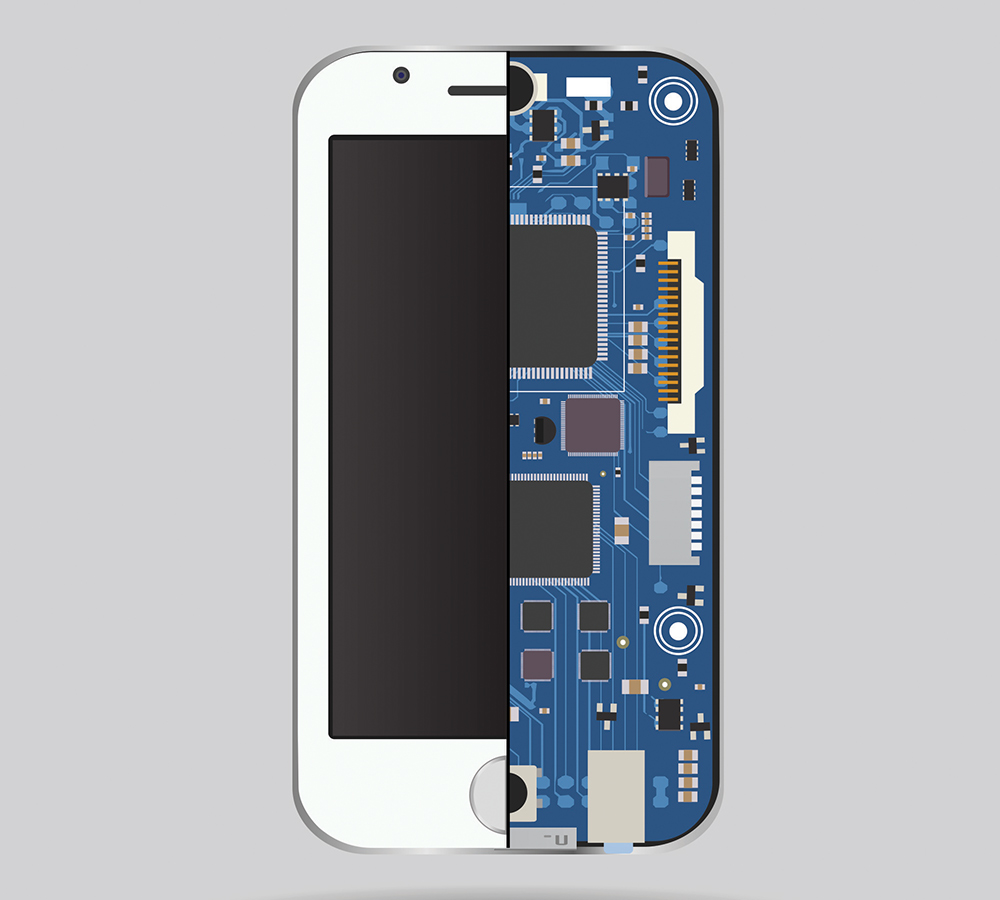
Introduction

manufacturer’s duties are very broad and encompass many different layers of the chain of production. In addition, some of these duties extend to those in the chain of distribution, namely, distributors, dealers, retailers, and service personnel.
Here are some of the types of customer service advice that can create the most significant risks:
- Pre-sale advice by the manufacturers of the finished product (original equipment manufacturer, or OEM) to an end customer who wants help in deciding what product to buy and how to use it safely and correctly.
- Pre-sale advice from the customer service personnel of a component parts supplier to an OEM or a higher tier supplier who wants to know what component to buy and how to use it or install it correctly.
- Post-sale advice from customer service personnel to customers as to how to use the product safely. This could help the customer with assembly or installation, or to help solve a specific problem.
- Post-sale investigations after a customer has suffered an incident or a “near miss.” The incidents could involve the product not operating properly or damage to the product or other property, injury, and death.
his is the first article of a two-article series devoted to the return current distribution in a 2-layer FR-4 PCB microstrip line configuration with a solid reference plane. This topic was discussed in [1], where the analytical results for a solid reference plane were presented. In this article, we compare these analytical results to the CST Studio simulation results. Simulation results closely follow the analytical results and give an insight into the details of the return current distribution. In Part 2, we will discuss the return current distribution in the reference plane containing numerous via anti-pads (cutouts).
At points A and B, vias connect the top trace to the ground (reference) plane. The forward current flows on the top trace as shown in Figure 2.
oing back several decades, Electrostatic Discharge (ESD) design and layout checks that were done manually were laborious and time-consuming, let alone not confidently reliable. These issues have been exacerbated by more advanced technologies along with the introduction of System on Chip (SoC) with digital, analog, and RF domains interacting. Thus, the complexity of ESD design verification needed sophisticated tools to bring in efficiency.
Nowadays, Electronic Design Automation (EDA) tools are particularly good at performing a considerable number of verification tasks in a very short time for ESD robustness and efficiency at both the schematic and layout levels on a broad spectrum of aspects. They brilliantly solve the well-known past issues of error-prone manual verifications. EDA tools’ flexibility allows one to employ them in every phase of the project design (from early debugging to final sign-off). They can be used directly by IC designers if a conscious usage is made. The involvement of ESD experts can be minimized during development.
any of my clients are power electronics companies that specialize in making switched-mode power supplies and motor drives. During the conducted emission tests, one of the challenges these manufacturers face is the resonance peaks in the harmonic noise somewhere between 10 MHz and 30 MHz. Often, no amount of filtering will eradicate or attenuate the peak. This is so typical that it is worth investigating the root causes of these peaks.
View Index
EMC Europe
September 12-14
The Battery Show
September 17-22
European Microwave Week
September 21
2023 Minnesota EMC Event
45th EOS/ESD Symposium and Exhibits
October 4-6
The Battery Show India
October 8-13
45th Annual Meeting and Symposium of the Antenna Measurement Techniques Association (AMTA)
Fundamentals of Random Vibration and Shock Testing Training
December 4-7
Military Standards 810 (MIL‑STD-810) Test Training






